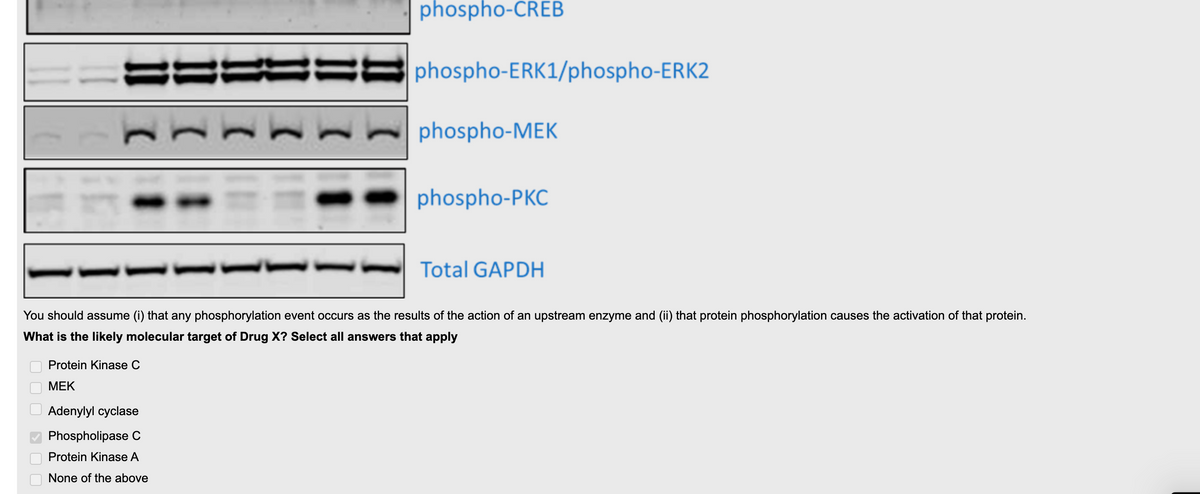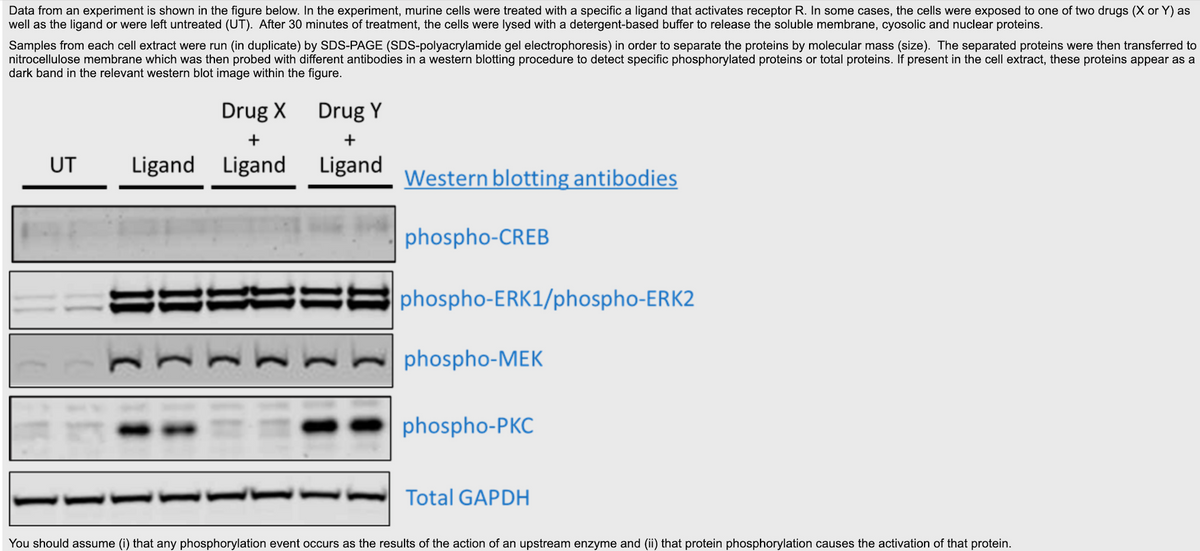Why is phospholipase c is the target on this western blot explain in detail
Biology 2e
2nd Edition
ISBN:9781947172517
Author:Matthew Douglas, Jung Choi, Mary Ann Clark
Publisher:Matthew Douglas, Jung Choi, Mary Ann Clark
Chapter9: Cell Communication
Section: Chapter Questions
Problem 1VCQ: Figure 9.8 HER2 is a receptor tyrosine kinase. In 30 percent of human breast cancers, HER2 is...
Related questions
Question
Why is phospholipase c is the target on this western blot explain in detail

Transcribed Image Text:phospho-CREB
====
!!
=== phospho-ERK1/phospho-ERK2
phospho-MEK
phospho-PKC
Total GAPDH
You should assume (i) that any phosphorylation event occurs as the results of the action of an upstream enzyme and (ii) that protein phosphorylation causes the activation of that protein.
What is the likely molecular target of Drug X? Select all answers that apply
Protein Kinase C
МЕК
Adenylyl cyclase
Phospholipase C
Protein Kinase A
None of the above
O OO S OO O

Transcribed Image Text:Data from an experiment is shown in the figure below. In the experiment, murine cells were treated with a specific a ligand that activates receptor R. In some cases, the cells were exposed to one of two drugs (X or Y) as
well as the ligand or were left untreated (UT). After 30 minutes of treatment, the cells were lysed with a detergent-based buffer to release the soluble membrane, cyosolic and nuclear proteins.
Samples from each cell extract were run (in duplicate) by SDS-PAGE (SDS-polyacrylamide gel electrophoresis) in order to separate the proteins by molecular mass (size). The separated proteins were then transferred to
nitrocellulose membrane which was then probed with different antibodies in a western blotting procedure to detect specific phosphorylated proteins or total proteins. If present in the cell extract, these proteins appear as a
dark band in the relevant western blot image within the figure.
Drug X
Drug Y
+
UT
Ligand Ligand
Ligand
Western blotting antibodies
phospho-CREB
phospho-ERK1/phospho-ERK2
phospho-MEK
phospho-PKC
Total GAPDH
You should assume (i) that any phosphorylation event occurs as the results of the action of an upstream enzyme and (ii) that protein phosphorylation causes the activation of that protein.
Expert Solution
This question has been solved!
Explore an expertly crafted, step-by-step solution for a thorough understanding of key concepts.
Step by step
Solved in 2 steps

Recommended textbooks for you

Biology 2e
Biology
ISBN:
9781947172517
Author:
Matthew Douglas, Jung Choi, Mary Ann Clark
Publisher:
OpenStax

Biology 2e
Biology
ISBN:
9781947172517
Author:
Matthew Douglas, Jung Choi, Mary Ann Clark
Publisher:
OpenStax